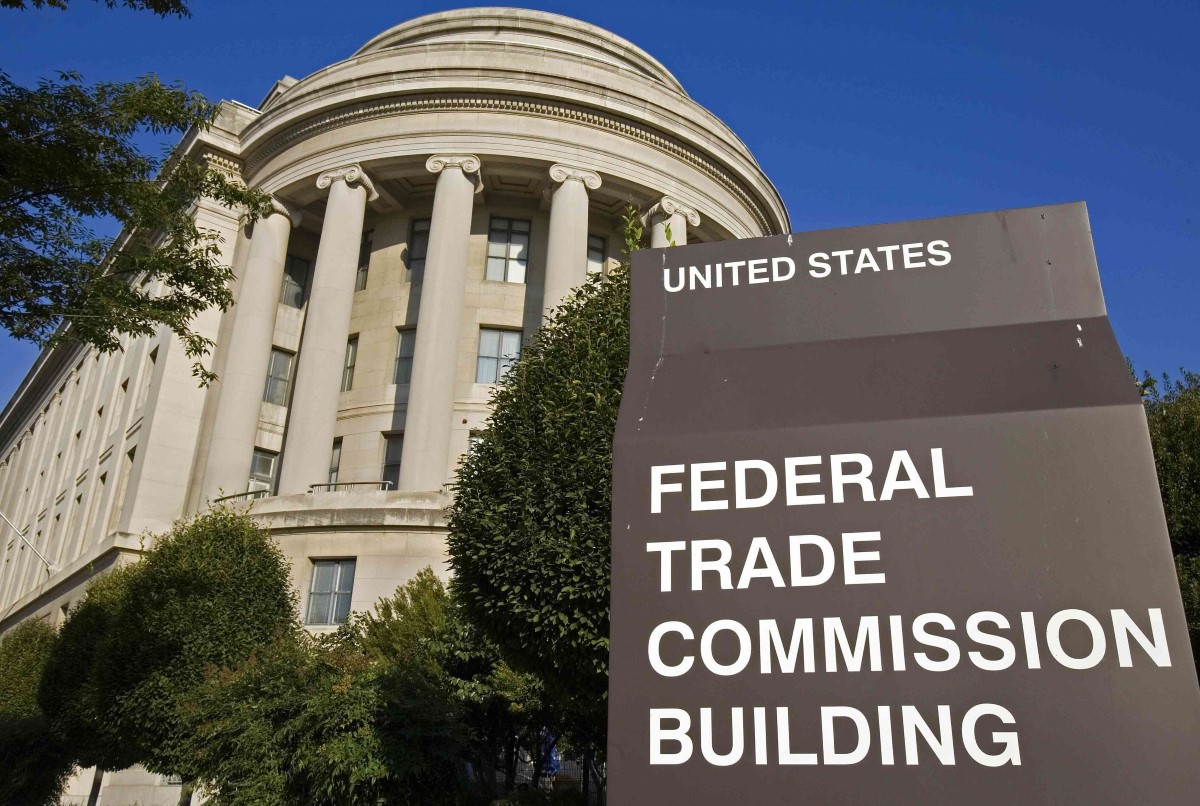Home>Finance>Why Does Chase Decline Payment For Fraud Protection?


Finance
Why Does Chase Decline Payment For Fraud Protection?
Published: February 19, 2024
Discover why Chase declines payments for fraud protection and how it impacts your finances. Learn how to safeguard your transactions and manage your finances securely.
(Many of the links in this article redirect to a specific reviewed product. Your purchase of these products through affiliate links helps to generate commission for LiveWell, at no extra cost. Learn more)
Table of Contents
Introduction
In the realm of financial security, the concept of fraud protection stands as a formidable shield against unauthorized transactions and potential monetary loss. Within this context, Chase, a prominent financial institution, employs robust fraud protection measures to safeguard its customers' accounts. However, there are instances where legitimate payments are declined, leaving customers perplexed and frustrated. This article aims to delve into the intricacies of Chase's fraud protection system, shedding light on the reasons behind declined payments and providing actionable insights to resolve such issues.
Navigating the terrain of modern banking, customers are increasingly reliant on digital transactions for everyday purchases, bill payments, and other financial undertakings. Amid this landscape, the prevalence of fraudulent activities underscores the critical importance of stringent security measures. Chase, cognizant of these risks, has implemented advanced fraud detection protocols designed to identify and prevent unauthorized transactions. While these measures are pivotal in safeguarding customers' funds, they can also lead to the inadvertent declination of legitimate payments, sparking confusion and inconvenience.
Understanding the nuances of Chase's fraud protection mechanisms is essential for customers seeking to comprehend the rationale behind declined payments. By unraveling the underlying factors contributing to these occurrences, individuals can equip themselves with the knowledge needed to navigate such situations effectively. Moreover, gaining insights into the resolution of declined payments for fraud protection can empower customers to proactively address and rectify these issues, thereby fostering a more seamless and secure banking experience.
As we embark on this exploration of Chase's fraud protection and the intricacies of declined payments, it is crucial to approach the topic with a blend of inquisitiveness and pragmatism. By unraveling the complexities of fraud protection and declined payments, we can empower customers to navigate these challenges with confidence and clarity, thereby fortifying their financial well-being in the digital age.
Understanding Chase Fraud Protection
Chase’s robust fraud protection system is a multifaceted defense mechanism aimed at safeguarding customers’ accounts from unauthorized transactions and fraudulent activities. Leveraging advanced technologies and sophisticated algorithms, Chase employs a proactive approach to detect and prevent potential fraudulent transactions in real time. This proactive stance is pivotal in mitigating the risks associated with unauthorized account access and fraudulent charges.
At the core of Chase’s fraud protection framework lies a sophisticated monitoring system that scrutinizes account activity for any signs of irregular or suspicious behavior. This includes analyzing transaction patterns, geographic locations, and purchase amounts to identify potential anomalies that may indicate fraudulent activity. By continuously monitoring account activity, Chase can promptly flag and investigate any transactions that deviate from a customer’s typical spending behavior, thereby mitigating the impact of potential fraud.
Moreover, Chase leverages cutting-edge technology to bolster its fraud protection capabilities. This includes the utilization of machine learning algorithms and artificial intelligence to enhance the detection of anomalous transactions. By leveraging these advanced technologies, Chase can adapt to evolving fraud tactics and swiftly identify emerging patterns of fraudulent behavior, thereby fortifying its defense against unauthorized account access and fraudulent charges.
Furthermore, Chase empowers its customers with tools to actively monitor and manage their accounts, further augmenting the overall fraud protection framework. Through features such as real-time transaction alerts and the ability to set customized spending limits, customers can exercise greater control over their accounts and promptly identify any unauthorized activity. This proactive engagement empowers customers to play an active role in fortifying their account security and swiftly mitigating potential risks.
By comprehending the intricacies of Chase’s fraud protection system, customers can gain a deeper appreciation for the proactive measures implemented to safeguard their financial assets. However, amid these robust security measures, legitimate payments may occasionally be declined, prompting the need to unravel the underlying reasons for such occurrences and explore avenues for resolution.
Reasons for Chase Declining Payment
Chase’s commitment to robust fraud protection entails a meticulous scrutiny of all transactions, which may, in certain instances, lead to the declination of legitimate payments. Understanding the underlying reasons for these declined payments is crucial in navigating the intricacies of Chase’s fraud protection system. Several factors contribute to the declination of payments, each rooted in the overarching goal of safeguarding customers’ accounts from potential fraudulent activities.
One common reason for Chase declining a payment is the detection of unusual or atypical transaction patterns. This can occur when a customer makes a purchase that deviates significantly from their typical spending behavior, such as a high-value transaction in an unfamiliar location. While this proactive monitoring is designed to thwart potential fraudulent transactions, it can also result in the inadvertent declination of legitimate payments, causing inconvenience for the customer.
Additionally, international transactions or purchases from unfamiliar vendors may trigger payment declines as part of Chase’s stringent fraud protection measures. The heightened risk associated with cross-border transactions and transactions with previously unused vendors prompts Chase to exercise heightened vigilance in scrutinizing such payments. While this serves to protect customers from unauthorized international charges, it can lead to legitimate transactions being flagged and declined.
Moreover, instances where a customer’s account lacks sufficient funds to cover a transaction can result in payment declination. While this is not directly related to fraud protection, insufficient funds can lead to payment declines, necessitating proactive management of account balances to prevent such occurrences.
Furthermore, if a customer fails to notify Chase of their travel plans or upcoming large purchases, the resulting transactions may be flagged as suspicious, leading to payment declination. This underscores the importance of proactive communication with Chase to preemptively address potential triggers for payment declines, especially when engaging in atypical spending behavior.
By recognizing the factors that can contribute to the declination of payments, customers can gain a clearer understanding of the intricacies of Chase’s fraud protection measures. This awareness lays the foundation for proactive steps to resolve and mitigate the impact of declined payments, thereby fostering a more seamless and secure financial experience.
How to Resolve Chase Declined Payments for Fraud Protection
Resolving declined payments stemming from Chase’s fraud protection measures necessitates a proactive and informed approach to address the underlying triggers for such occurrences. By leveraging the available resources and communication channels, customers can navigate and resolve payment declines effectively, thereby mitigating the impact on their financial transactions and overall banking experience.
One pivotal avenue for resolving declined payments is to proactively monitor account activity and promptly respond to any transaction alerts issued by Chase. Real-time transaction alerts empower customers to stay informed about the status of their payments, enabling them to swiftly address any flagged transactions and verify their legitimacy. By promptly acknowledging and confirming legitimate transactions, customers can preemptively mitigate the risk of payment declines.
Additionally, maintaining open lines of communication with Chase is essential for resolving and preempting payment declines. This includes notifying Chase of upcoming travel plans, especially international trips, to ensure that transactions during the travel period are not flagged as suspicious. Similarly, communicating significant changes in spending patterns or large purchases can preemptively mitigate the risk of legitimate transactions being declined due to atypical activity.
In cases where a legitimate payment is declined, reaching out to Chase’s customer support is instrumental in resolving the issue. By engaging with Chase’s dedicated support team, customers can seek clarification on the reasons for the payment decline and request assistance in facilitating the successful processing of the transaction. This proactive engagement not only resolves the immediate payment decline but also equips customers with insights to preempt similar occurrences in the future.
Moreover, leveraging Chase’s digital banking platforms and mobile applications can provide customers with enhanced visibility and control over their accounts, thereby facilitating the resolution of declined payments. Features such as customizable transaction alerts, spending limits, and the ability to manage travel notifications empower customers to actively manage their account security and preemptively address potential triggers for payment declines.
Furthermore, remaining vigilant against potential fraudulent activities and regularly reviewing account statements can bolster customers’ ability to identify and address payment declines promptly. By promptly reporting any unauthorized transactions or suspicious account activity, customers can collaborate with Chase to mitigate the impact of fraudulent charges while safeguarding legitimate payments from being erroneously declined.
By embracing a proactive and informed approach, customers can effectively navigate and resolve declined payments stemming from Chase’s fraud protection measures. This multifaceted strategy empowers customers to preemptively address potential triggers for payment declines, engage with Chase’s support channels, and leverage digital banking tools to fortify their account security and foster a seamless financial experience.
Conclusion
In the realm of modern banking, the intersection of digital transactions and robust fraud protection measures underscores the critical importance of understanding the intricacies of payment declines within the context of Chase’s fraud protection system. As customers navigate the landscape of financial security, comprehending the underlying reasons for declined payments and the proactive steps to resolve such occurrences is pivotal in fostering a seamless and secure banking experience.
Chase’s unwavering commitment to safeguarding customers’ accounts through advanced fraud protection measures is a testament to its dedication to fortifying financial security in the digital age. By leveraging cutting-edge technologies, proactive monitoring systems, and customer empowerment tools, Chase endeavors to thwart potential fraudulent transactions while empowering customers to actively manage their account security.
However, the inadvertent declination of legitimate payments underscores the need for customers to proactively engage with Chase’s fraud protection framework. Understanding the triggers for payment declines, such as atypical transaction patterns, international purchases, insufficient funds, and unnotified travel plans, enables customers to preemptively address potential triggers and mitigate the impact of declined payments.
By embracing a proactive and informed approach, customers can leverage the available resources and communication channels to resolve declined payments effectively. Through proactive account monitoring, open communication with Chase, engagement with customer support, and the utilization of digital banking tools, customers can navigate and resolve payment declines while fortifying their account security.
As we traverse the intricacies of Chase’s fraud protection and the nuances of declined payments, it is imperative to recognize the symbiotic relationship between robust security measures and the proactive engagement of customers. By unraveling the complexities of fraud protection and declined payments, customers can navigate these challenges with confidence and clarity, thereby fortifying their financial well-being in the digital age.
In conclusion, the proactive collaboration between customers and Chase, coupled with a deep understanding of fraud protection and payment decline resolution, lays the foundation for a more seamless and secure banking experience. By empowering customers with the knowledge and tools to navigate and resolve declined payments, Chase reinforces its commitment to safeguarding customers’ financial assets while fostering a climate of trust and security in the realm of modern banking.














